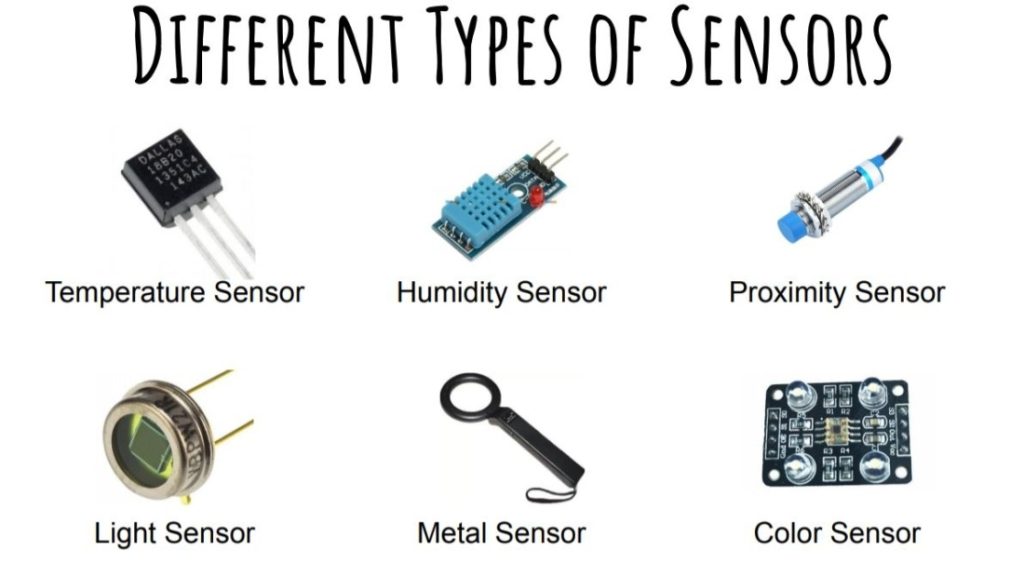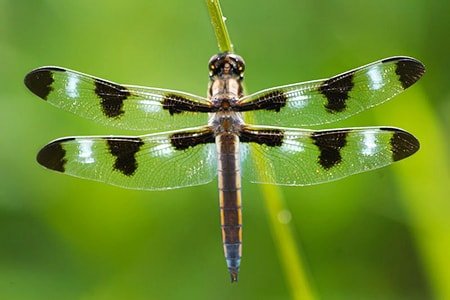The, invented over a century ago, is the simplest form of electrical lighting. It contains a filament that heats up and emits light when an electric current passes through it. There are many different types of electric bulbs used today, from LED to incandescent light bulbs, none of which would be present without the invention of the first light bulb.
Thomas Alva Edison is synonymous with the “invention” of the first electric bulb. However, is this true? Read on to find more about who invented the first light bulb and some interesting facts about its discovery.
Who Discovered Electricity and Electric Bulb and When?
The story of the light bulb begins long before Edison patented his design. It started with the discovery of electricity as well as its uses.
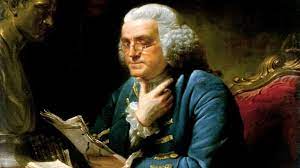
Electricity is a natural energy that exists in the world. However, people had to discover and understand it. The credit for the discovery of electricity is Benjamin Franklin. He was already a renowned scientist before he became interested in electricity. In the mid-1700s, Benjamin Franklin came up with the idea of electricity flowed between positive and negative elements. Furthermore, he also believed that lightning was a form of this flowing electricity. Therefore, he conducted his famous kite experiment to show that lightning was electricity.
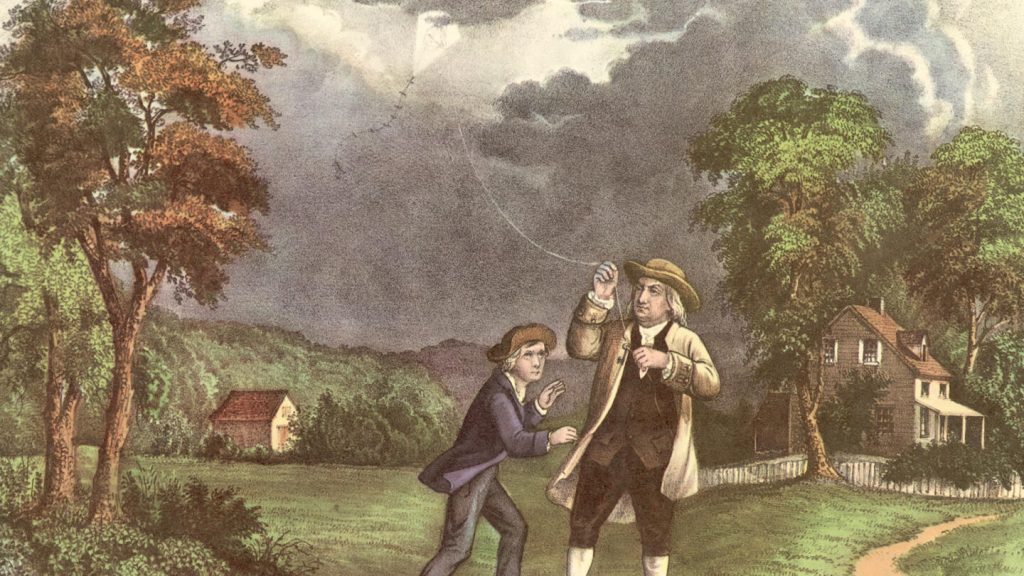
We all know how the experiment goes. The scientist flew a kite during a thunderstorm. He tied a metal key to conducting electricity. Just as he predicted, electricity from the storm clouds transferred to the kite and flowed down the string to give him a shock. Many other discoveries like the electric bulb follow this one.
However, contrary to popular belief, Benjamin Franklin was not the first person to discover electricity.
Early Studies of Electricity
Scientists have found evidence that ancient civilizations also experimented with electricity. During 600 BC, the Ancient Greeks discovered that rubbing fur on amber caused an attraction between the two and was static electricity. In 1936, archaeologists – a clay pot containing sheets of copper inside. These may be the old batteries that produced light in the ancient Roman civilizations. The clay pot also contained tin alloy as well as an iron rod. Also, It generated electric current by filling it with an acidic solution, like vinegar. It shows that people have been studying electricity long before Benjamin Franklin.
Electricity During the 17th Century
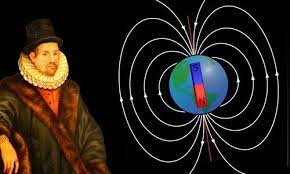
At the beginning of the 17th century, William Gilbert established the study of electricity and magnetism. A+nother English scientist, Sir Thomas Browne, conducted further investigations and wrote books about his findings. These two scientists were the first to use the term “electricity.” Scientists during this time generally studied static electricity, that is, until Benjamin Franklin came along.
History of Electricity – Download
What did people use before the light or electric bulb?
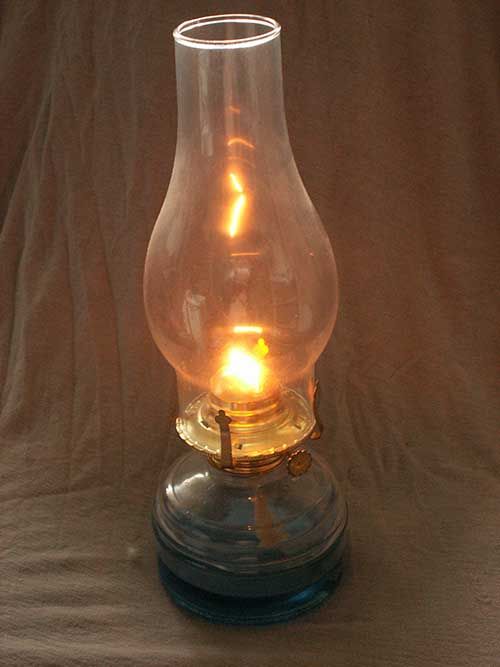
Lighting tools were usually functional objects. However, sometimes they acted as decorative pieces on special occasions. For example, the Greeks used earthenware oil lamps daily but chose more sophisticated ones such as precious bronze lamps during religious ceremonies.
Furthermore, the lighting appliance used reflected the person’s social standing. Only wealthy people and members of the clergy could afford to use beeswax candles in the Middle ages. The lower classes, on the other hand, could only use suet-based or tallow candles. Also, these candles contained rendered animal fat that produced thick black smoke and gave off a terrible stench.
Lastly, During the 18th century, oil lamps underwent several technical improvements and were the standard sources of light up until the end of the 19th century.
Who Invented the Electric Bulb?
There are several people who contributed to the invention of the electric bulb. They were as follows:
Alessandro Volta
Italian inventor Alessandro Volta developed the first practical method of generating electricity known as the voltaic pile, in 1800. The voltaic pile contained layers of cardboard soaked in saltwater interwoven with alternating discs of zinc as well as copper. This setup conducted electricity when a copper wire was connected at either end. Although it is actually a predecessor of a battery, the voltaic pile is also considered to be the earliest form of incandescent lighting. In the book, Energy and Society: An Introduction, Harold H Schobert said that the voltaic pile opened doors for scientists to examine currents under controlled conditions.
Sir Humphry Davy
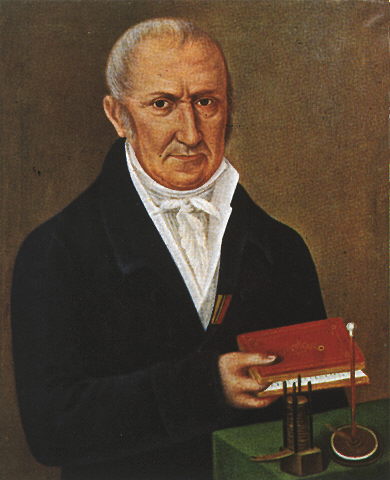
After Alessandro Volta presented his discovery to the Royal Society in London, Davy invented the first electric lamp in 1802 by connecting voltaic piles to charcoal electrodes. His invention was known as an electric arc lamp due to the bright arc of light radiated between the two carbon rods. Although this was a step up from Volta’s stand-alone piles, it still wasn’t a practical source of light. This is because the rudimentary lamp burned out quickly and was too bright for use at home. However, Davy’s other experiments with lighting led to the invention of miners’ safety lamps, as well as the street lights in Paris and around Europe.
Warren de la Rue
In 1840, Britain born scientist Warren de la Rue developed a lightbulb using a coiled platinum filament in place of copper. However, the high cost of platinum prevented the bulb from becoming a commercial success.
William Staite
Firstly, William Staite improved the longevity of conventional arc lamps using a clockwork mechanism that controlled the movement of the lamps carbon rods. However, the cost of batteries used to power the lamps reduced its commercial success.
Joseph Wilson Swan
In 1850, Joseph Wilson Swan created a light bulb by placing carbonized paper filaments in a vacuum glass bulb. However, the lack of a good vacuum and a sufficient supply of electricity caused a short lifetime. In the 1870s, better vacuum pumps were available, so Swan continued experiments on his light bulbs. Then in 1878, he developed a longer-lasting light bulb using a treated cotton thread. This change also prevented the blackening of the glass.
Henry Woodward and Mathew Evans
In 1874, two electricians filled a Canadian patent for lamps of different sizes as well as shapes of carbon rods that are held between electrodes in a glass cylinder filled with nitrogen. However, their attempt at commercializing their design failed and they eventually sold their patent to Edison.
Thomas Alva Edison
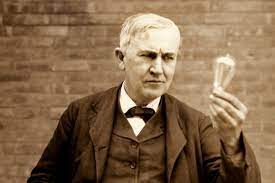
In 1878, Edison began research to develop a practical incandescent lamp. He then came up with an improved version of the existing electric lamps and filed his first patent. Then, after testing numerous types of material for metal filaments, he filed another patent in 1879, for an electric lamp that used a carbon filament or strips connected to platinum contact wires. The patent described several different ways of creating the carbon filament such as wrapping cotton as well as linen threads around wood splints, papers coiled in various ways etc. He obtained the patent after several months. Edison and his team identified that a carbonized bamboo filament could last over 1200 hours. This discovery marked the beginning of commercially manufactured electric bulbs and in thus, 1880, Edison’s company, Edison Electric Light Company began marketing its new product.
Design of the First Electric Bulb
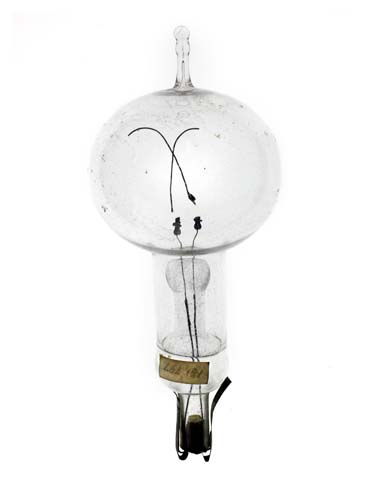
Edison’s light bulb contained a filament housed inside a glass vacuum bulb. He owned a glass blowing shed, which made the fragile glass bulbs for his experiments. Edison was trying to invent a high resistance system that would require less electrical power than arc lamps.
By January 1879, Edison had built the first incandescent electric bulb. It used a thin platinum filament inside the glass vacuum bulb. Unlike cotton or wooden filament, platinum melted slowly. This was a step up from the previous electric lamps, but the lamp only lasted a few hours. To improve the bulb, Edison tested thousands and thousands of materials to use as filament, however, his efforts did not pay off.
One day, Edison was sitting in his laboratory absent-mindedly rolling a portion of compressed carbon between his fingers. This gave him the idea to carbonize materials used for the filament. Thus, he tested the carbonized filaments of cotton, Baywood, cedar, boxwood as well as hickory.
The carbonized cotton thread filament began to radiate a soft orange glow that burned out fifteen hours later. Further experiments resulted in filaments that could burn longer. Thus, Edison obtained patent number 223,898 for his electric lamp.
Improvements in the Electric Bulb
Edison’s electric bulb is only the beginning of the lighting instruments we know today. The following were the scientists responsible for new improvements and discoveries:
Lewis Howard Latimer
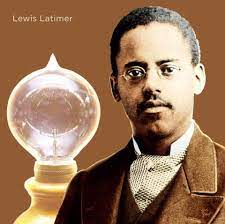
In 1882, one of Edison’s researchers, Lewis Howard Latimer, patented a more efficient way to manufacture carbon filaments.
Wills R. Whitney
Then in 1903, Whitney invented a treatment for filaments that allowed them to burn bright without darkening the insides of the glass bulbs.
William David Coolidge
Then American physicist, William Coolidge, working for General Electric, improved the company’s manufacturing process of tungsten filaments.
Tungsten filaments

Tungsten, which has the highest melting point compared to any chemical element, was known as an excellent material for lightbulb filaments. However, there was a lack of machinery to produce very thin tungsten in the late 19th century. However, due to William Coolidge’s effort, General Electric began selling electric bulbs with a tungsten filament in 1911. Bulb filaments today still use tungsten as the primary element.
Light-emitting diodes or LEDs
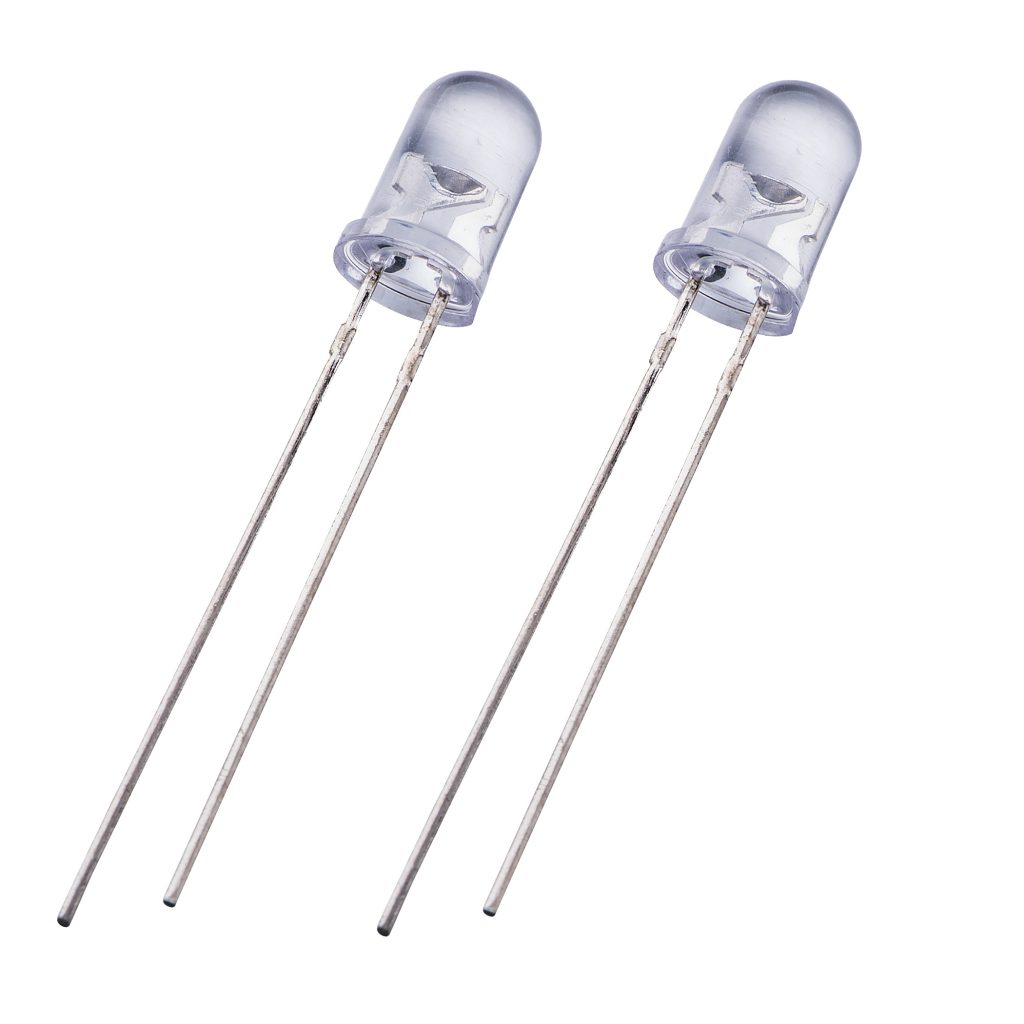
Light-emitting diodes are the future of lighting because it requires lower energy to run. Furthermore, it comes with a lower monthly price tag and a longer life than traditional incandescent lightbulbs. Nick Holonyak, an American scientist, accidentally invented a red LED while trying to create a laser in the early 1960s. The principle behind an LED is that semiconductors glow when an electric current passes through them. Holonyak then patented the LED for use as a light fixture.
Soon, yellow as well as green LEDs were created and have many applications including indicator lights, calculator displays etc. The blue LED was the last to be made. It was created in the early 1990s by scientists Isamu Akasaki, Shuji Nakamura as well as Hiroshi Amano, for which they won the Nobel Prize in Physics in 2014. Blue LEDs were beneficial because they allowed scientists to create white LED lightbulbs by coating the diodes with phosphor material.
Wireless Light Bulbs
Today, lighting choices have greatly expanded and people can choose from different types of electric bulbs, from compact fluorescent (CFL) bulbs (that work by heating a gas that releases ultraviolet light) to LED bulbs. Several lighting companies, for example, Phillips, are pushing the boundary of what light bulbs can do. It is one of the companies that have made wireless lightbulbs that can be controlled via a mobile phone app. The Phillips Hue, for instance, uses LEDs that can quickly be turned on or off or be dimmed by a flick on a phone screen. Furthermore, it can also be set to a large range of colours and synced with music, video games or music.
FAQs
When was electricity first installed in the White House?
At the White House, electricity was first installed in 1891 during President Benjamin Harrison’s administration, because it was a part of the project to wire the State, Navy and War Building next door.
How long could the first light bulb last?
The first light bulb created by Edison in October 1879, had a carbonized cotton filament and could last for about 15 hours.
Does the first electric light bulb still work?
No, Edison’s first light bulb does not work in the present. However, the Centennial Light is the world’s longest-lasting light bulb, that has been burning since 1901. It is located at 4550 East Avenue, Livermore, California. The Livermore-Pleasanton Fire Department maintains the electric bulb.
Why was Edison’s light bulb so important?
Edison invented or refined instruments that created a profound impact on how people lived. His efforts resulted in a carbonized bamboo filament bulb that lasted for 1,200 hours. This long-lasting incandescent light bulb revolutionized indoor lighting, which helped people step away from fire as a light source.
How many trials did it take to invent the lightbulb?
Thomas Edison’s teachers believed that he was too stupid to learn anything. Furthermore, he was also fired from his first two jobs as they believed him to be non-productive. However, after 1,000 unsuccessful attempts at inventing the light bulb, Edison created the first incandescent bulb.
What would happen if the light bulb was never invented?
If light bulbs had never been invented, the subsequent discoveries by Westinghouse, Swan etc would’ve not taken place. Furthermore, theoreticians like Maxwell would have little to no incentive to develop the commercial use of electricity. Therefore, we would probably be at least 50 years behind in the field of electronics.
What are some prominent electricity discoveries and inventions
Alternating Current: Discovered by Nicola Tesla
Alternating current was one example of Tesla’s greatest discoveries. Together with Westinghouse, Tesla demonstrated the superiority of alternating current compared to direct current systems. They then managed to make their discovery a part of the experimental centre at Niagara Falls. His work with alternating current led to the invention of the Tesla coil as well as high-frequency generators.
Electromagnetism: Discovered by Michael Faraday
One of Michael Faraday’s key discoveries is electromagnetic induction, which is the basic principle for generators as well as electric motors. The process of obtaining electricity using a moving magnet as well as a copper coil is also attributed to him. Faraday also developed two laws, Faraday’s laws of electromagnetic induction, which earned him the name, “Father of Electricity”.
The wireless telegraph: Invented by Heinrich Rudolf
James Clerk Maxwell expanded Faraday’s work on electromagnetic fields. Furthermore, he developed four differential equations that mathematically related electric and magnetic fields. These equations are known as the Maxwell equations. Heinrich Rudolf Hertz based his invention on these equations and thus, created the wireless telegraph.
Other discoveries till 1800
| 600 BC | During the ancient era, Ancient Greek philosopher Thales of Miletus described static electricity by rubbing fur on amber |
| 800 AD | Arabic naturalists, as well as physicians, described electric fish as well as electrostatic phenomena. |
| 1300 | Arabic naturalists as well as physicians described electric rays and identified them with lightning. |
| 1600 | English scientist William Gilbert coined the word electrics as well as explained the magnetism of Earth. |
| 1720 | During the year, English scientist Stephen Gray created a distinction between insulators as well as conductors. |
| 1752 | American scientist Benjamin Franklin proved that lightning was electricity by flying a kite. Furthermore, explained the principle behind Leyden jars. |
Discoveries during the 1800s
| 1800 | Italian physicist Alessandro Volta invented the battery. |
| 1816 | English inventor Francis Ronalds built the first working electric telegraph. |
| 1825 | English physicist William Sturgeon developed the first electromagnet. |
| 1827 | During this year, German physicist Georg Ohm introduced the concept of electrical resistance. |
| 1831 | American scientist Joseph Henry in the United States developed a prototype DC motor. |
| 1833 | During the year, Michael Faraday invented the thermistor. |
| 1837 | English scientist Edward Davy invented the electric relay. |
| 1844 | American inventor Samuel Morse developed telegraphy. |
| 1844 | Woolrich Generator, the earliest electrical generator used in an industrial process. |
| 1850 | During the year, Belgian engineer Floris Nollet invented a practical AC generator. |
| 1851 | Heinrich Daniel Ruhmkorff developed the first coil, which he then patented in 1851. |
| 1878 | William Crookes invents the Crookes tube, a prototype of Vacuum tubes. |
| 1878 | English engineer Joseph Swan invented the Incandescent light bulb. |
| 1879 | Then, Thomas Alva Edison introduced a long-lasting filament for the incandescent lamp. |
| 1887 | During the year, German American inventor Emile Berliner invented the gramophone record. |
| 1888 | German physicist Heinrich Hertz proves the existence of electromagnetic waves. |
| 1894 | Indian physicist Jagadish Chandra Bose introduced the use of the semiconductor junction to detect radio waves. |
| 1894 | Russian physicist Alexander Stepanovich Popov finds a use for radio waves, building a radio receiver that can detect lightning strikes. |
Other discoveries during the 19th century
| 1901 | American engineer Peter Cooper Hewitt invented the Fluorescent lamp. |
| 1904 | English engineer John Ambrose Fleming invented the diode. |
| 1906 | During the year, American inventor Lee de Forest invented the triode. |
| 1908 | Scottish engineer Alan Archibald Campbell-Swinton laid out the principles of Television. |
| 1911 | During this year, Dutch physicist Heike Kamerlingh Onnes discovered Superconductivity. |
| 1912 | During this year, American engineer Edwin Howard Armstrong developed the Electronic oscillator. |
| 1918 | French physicist Henri Abraham, as well as Eugene Bloch, invented the multivibrator. |
| 1924 | During the year, Japanese engineer Kenjiro Takayanagi began a research program on electronic television. |
| 1925 | During this year, Austrian American engineer Julius Edgar Lilienfeld patented the first FET. |
| 1927 | American engineer Harold Stephen Black invented a negative feedback amplifier. |
| 1927 | During the year, German Physicist Max Dieckmann invented the Video camera tube. |
| 1928 | Raman scattering was discovered by C. V. Raman as well as Kariamanickam Srinivasa Krishnan. |
| 1936 | Dudley E. Foster, as well as Stuart William Seeley, developed the FM detector circuit. |
| 1936 | During the year, Austrian engineer Paul Eisler invented the Printed circuit board. |
| 1936 | Scottish Scientist Robert Watson-Watt developed the Radar concept which was proposed earlier. |
Other discoveries during mid 19th century
| 1936 | Scottish Scientist Robert Watson-Watt developed the Radar concept which was proposed earlier. |
| 1938 | Russian-American engineer Vladimir K. Zworykin developed the Iconoscope. |
| 1939 | During the year, Edwin Howard Armstrong developed the FM radio receiver. |
| 1939 | Russell, as well as Sigurd Varian, developed the first Klystron tube in the US. |
| 1941 | German engineer Konrad Zuse developed the first programmable computer in Berlin. |
| 1944 | Scottish engineer John Logie Baird developed the first colour picture tube. |
| 1947 | American engineers John Bardeen, as well as Walter Houser Brattain together with their group leader William Shockley, invented the transistor. |
| 1948 | During this year, Hungarian-British physicist Dennis Gabor then invented Holography. |
| 1950 | French physicist Alfred Kastler invented the MASER. |
Discoveries during the late 19th century
| 1954 | Optical fibre was invented by Indian physicist Narinder Singh Kapany. |
| 1957 | Japanese engineer Jun-ichi Nishizawa invented the semiconductor laser. |
| 1958 | American engineer Jack Kilby created the integrated circuit (IC). |
| 1959 | MOSFET was invented by Mohamed Atalla as well as Dawon Kahng at Bell Labs. |
| 1960 | American engineer Theodore Harold Maiman developed a LASER. |
| 1962 | Nick Holonyak Jr. invented the LED. |
| 1963 | During this year, the first home Videocassette recorder (VCR) was invented. |
| 1963 | During this year, the first electronic calculator. |
| 1966 | Fibre-optic communication by Kao as well as Hockham. |
| 2008 | During this year, American scientist Richard Stanley Williams invented the memristor. |
Share with your friends
